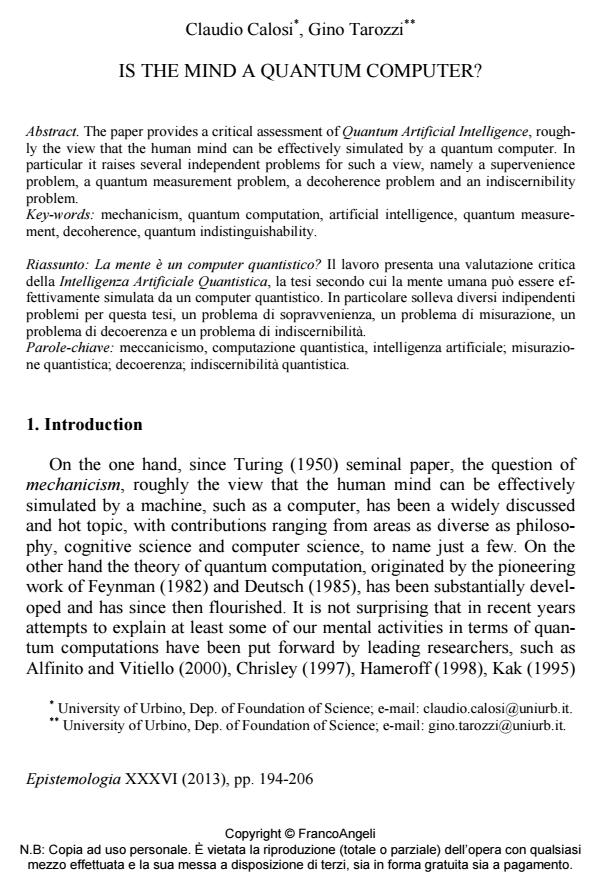Is the mind a quantum computer?
Titolo Rivista EPISTEMOLOGIA
Autori/Curatori Claudio Calosi
Anno di pubblicazione 2014 Fascicolo 2013/2
Lingua Inglese Numero pagine 13 P. 194-206 Dimensione file 620 KB
DOI 10.3280/EPIS2013-002002
Il DOI è il codice a barre della proprietà intellettuale: per saperne di più
clicca qui
Qui sotto puoi vedere in anteprima la prima pagina di questo articolo.
Se questo articolo ti interessa, lo puoi acquistare (e scaricare in formato pdf) seguendo le facili indicazioni per acquistare il download credit. Acquista Download Credits per scaricare questo Articolo in formato PDF

FrancoAngeli è membro della Publishers International Linking Association, Inc (PILA)associazione indipendente e non profit per facilitare (attraverso i servizi tecnologici implementati da CrossRef.org) l’accesso degli studiosi ai contenuti digitali nelle pubblicazioni professionali e scientifiche
The paper provides a critical assessment of Quantum Artificial Intelligence, roughly the view that the human mind can be effectively simulated by a quantum computer. In particular it raises several independent problems for such a view, namely a supervenience problem, a quantum measurement problem, a decoherence problem and an indiscernibility problem.
Il lavoro presenta una valutazione critica della Intelligenza Artificiale Quantistica, la tesi secondo cui la mente umana puo essere effettivamente simulata da un computer quantistico. In particolare solleva diversi indipendenti problemi per questa tesi, un problema di sopravvenienza, un problema di misurazione, un problema di decoerenza e un problema di indiscernibilita.
Parole chiave:Meccanicismo, computazione quantistica, intelligenza artificiale; misurazione quantistica; decoerenza; indiscernibilita quantistica.
Claudio Calosi, Is the mind a quantum computer? in "EPISTEMOLOGIA" 2/2013, pp 194-206, DOI: 10.3280/EPIS2013-002002